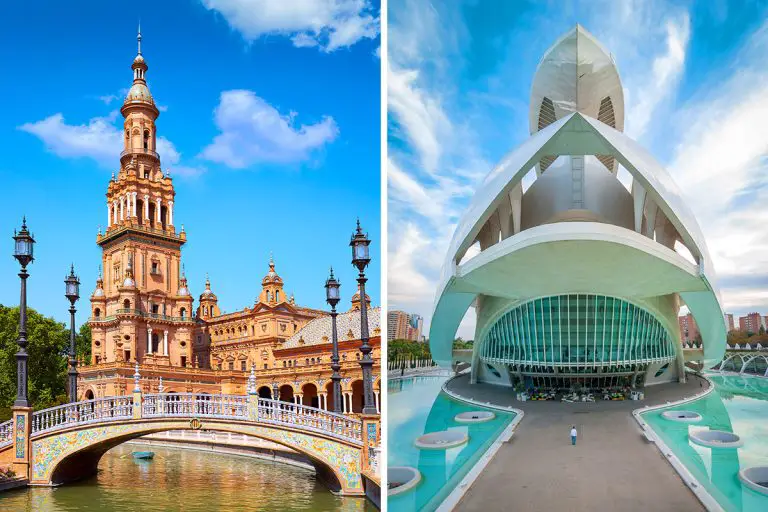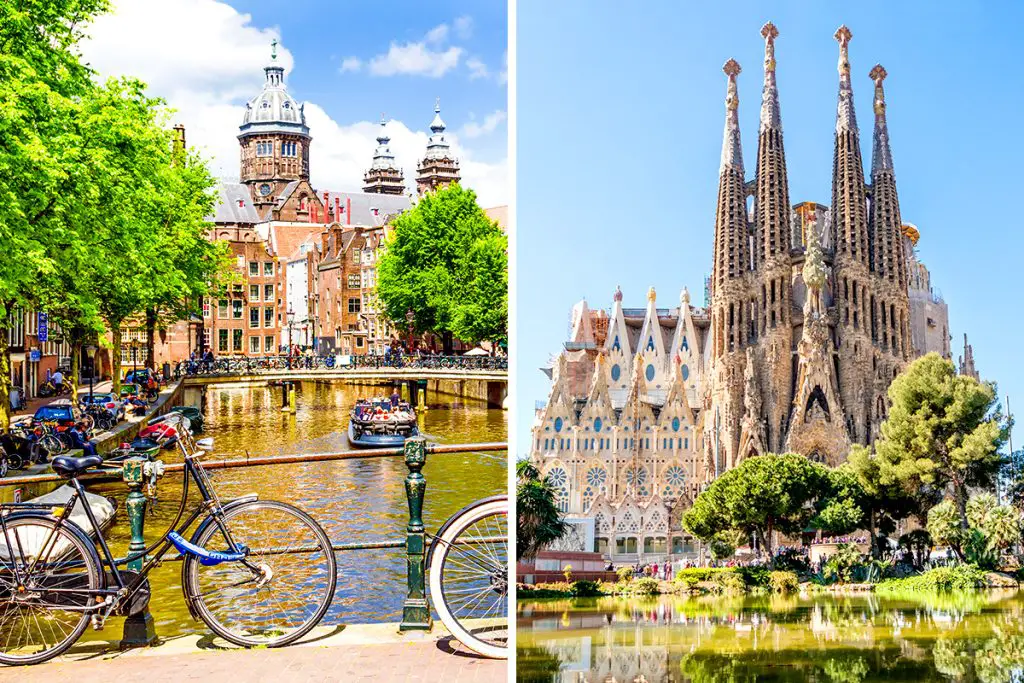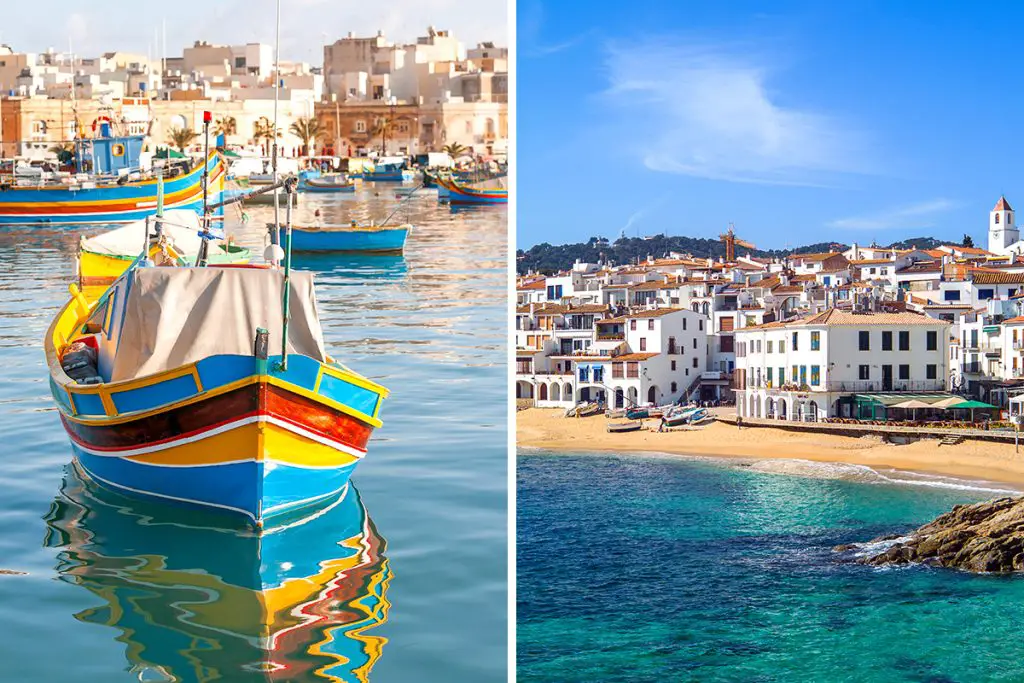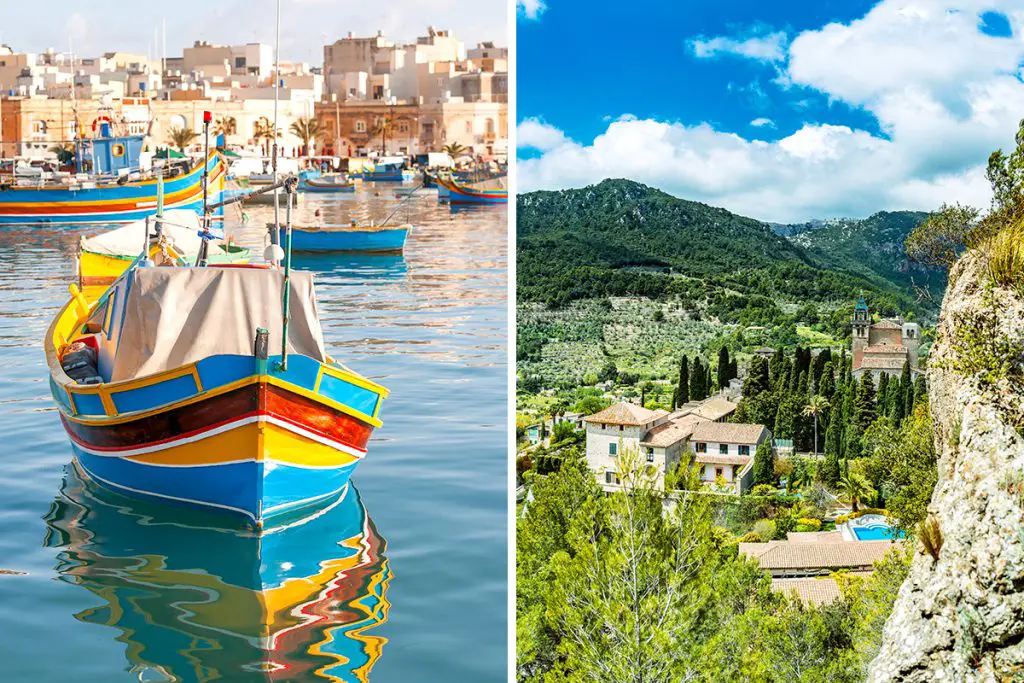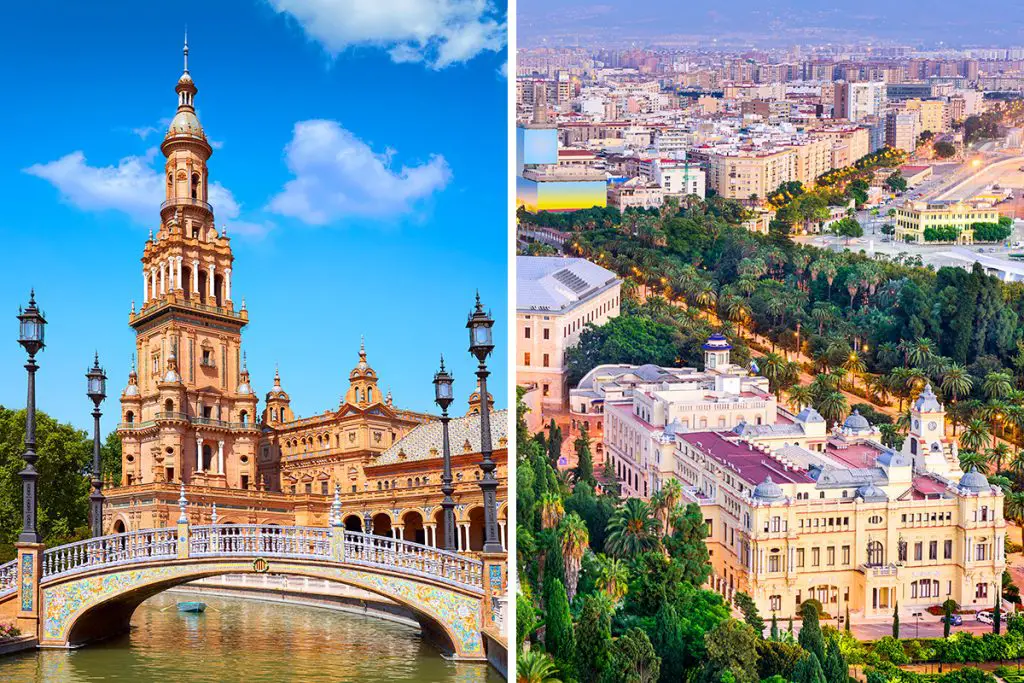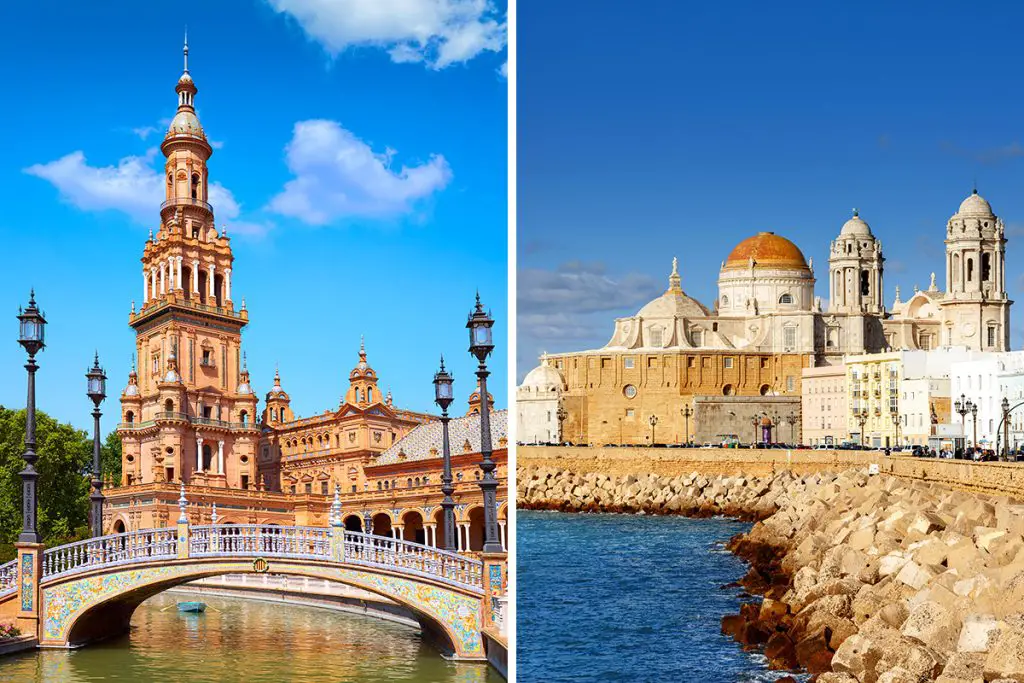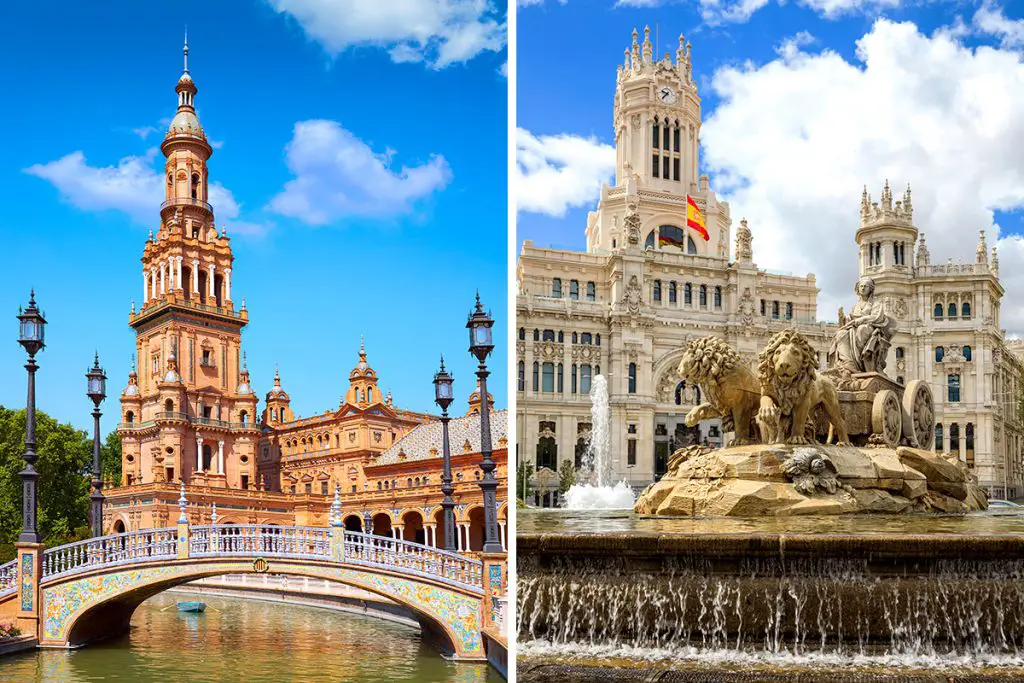Ah, the allure of Spain! Whether it’s the deep history of Seville or the modern charms of Valencia, each city offers something unique. But when they both beckon so invitingly, making a choice can become a real conundrum. Ready to dive into what sets these two destinations apart? Keep reading!
History & Culture
When you’re deciding between Seville and Valencia, history and culture are big factors to consider. Both cities are Spanish, but their histories and local cultures are as diverse as their landscapes. Let’s take a closer look.
Seville, located in the south of Spain, is the heart of Andalusia. It’s a city steeped in Moorish history, with influences from various civilizations like the Romans and the Gypsies.
Flamenco music fills the air, and traditional celebrations like Semana Santa (Holy Week) bring the city to life. The grand palaces and ancient cathedrals of Seville tell stories of a city that has always valued its heritage.
Valencia, on the other hand, lies on the east coast of Spain. The city is a blend of the old and the new, where medieval walls coexist with futuristic buildings. Valencia is known for its annual Fallas festival, a celebration with fireworks and sculptures that light up the city. Unlike Seville, which revels in its past, Valencia embraces modernity without losing its historical roots.
While both cities are enriched by the arts, Seville leans towards the traditional, focusing on classical Spanish art forms like bullfighting and flamenco. Valencia, however, leans more towards the contemporary, with a vibrant street art scene and modern museums and galleries.
In summary, if you’re captivated by deeply-rooted traditions and historical splendors, Seville might be more your speed. But if you’re looking for a place where past meets future in an exciting blend, Valencia should be on your radar. Both cities offer a unique take on Spanish culture and history, making them fantastic choices for your next travel adventure.
Attractions & Activities
Ready to be swept off your feet by captivating attractions and activities? Seville and Valencia are not just about history and culture; they also provide a smorgasbord of things to do that can make your trip unforgettable. Let’s delve into what each city has to offer in terms of attractions and activities.
Seville is a wonderland for those who appreciate architecture and the performing arts. One can’t visit Seville without checking out the Alcázar, a royal palace that’s a pinnacle of Mudéjar architecture. For a touch of Spain’s religious history, the Seville Cathedral, one of the largest cathedrals in the world, is a must-see.
Love performing arts? Seville is the birthplace of Flamenco. You can catch an authentic Flamenco show in the neighborhoods of Triana or La Macarena.
Valencia offers a contrasting set of attractions that are more modern but equally intriguing. The City of Arts and Sciences is a futuristic complex that’s a feast for the eyes and the mind, housing an opera house, a science museum, and more.
If you’re into history but want a different flavor than Seville’s, the Valencia Cathedral is home to what is claimed to be the Holy Grail. For nature enthusiasts, the Albufera Natural Park offers a beautiful freshwater lagoon and lush wetlands.
Seville offers a more traditional experience. The Guadalquivir River provides opportunities for kayaking, and the Maria Luisa Park is perfect for a romantic horse-drawn carriage ride. In Valencia, you can take a boat tour on the Albufera lagoon or enjoy a bike tour that takes you across the Turia Gardens, which stretches for around 9 kilometers (approximately 5.6 miles).
Summing it up, Seville captivates with its historical landmarks and traditional activities, offering a journey back in time. Valencia, on the other hand, serves a modern twist with its contemporary attractions and outdoor experiences. Both cities have unique offerings that can cater to different interests, making it a difficult but exciting choice for your next travel destination.
Beaches
Ah, the allure of the sea! While both Seville and Valencia are famous for their culture and attractions, they also offer different beach experiences that you won’t want to miss. Let’s dive into what each has in store for beach lovers.
Seville, although inland, is not devoid of water experiences. The city is located around 87 kilometers (roughly 54 miles) from the nearest coast, in Matalascañas. The beach there is characterized by fine golden sand and offers a more secluded, peaceful atmosphere.
The Guadalquivir River also provides some waterside relaxation closer to the city, although it doesn’t give you that ocean feel.
Valencia, on the other hand, offers a genuine Mediterranean beach experience.
The city is known for its wide sandy beaches like Malvarrosa and Patacona. These beaches are easily accessible and stretch for about 1.2 kilometers (approximately 0.75 miles) each. They offer a range of water sports like windsurfing and paddleboarding, which Seville’s riverbanks and distant coast cannot.
If you’re a fan of long walks on the beach, Valencia has the edge. The long stretches of sand allow for leisurely strolls that can span several kilometers. Seville’s nearby beaches are shorter in length, making for a more contained experience.
In a nutshell, if you’re looking for direct access to extensive, activity-rich beaches, Valencia is your go-to option. Seville offers a more limited and low-key beach experience but makes up for it with its other charming attractions. Regardless of your preference, both cities offer a touch of aquatic bliss to complement their other wonders.
Eating, Drinking & Nightlife
The culinary scene, libations, and nightlife of a city can elevate your vacation from great to unforgettable. When considering Seville and Valencia, you’ll find that both cities offer gastronomic delights and lively evenings but in distinct styles. So what’s on the menu in these two Spanish cities?
When it comes to food, Seville is your go-to for traditional Andalusian cuisine. Tapas bars are ubiquitous here, serving small dishes like patatas bravas, gazpacho, and fried fish. Valencia is the birthplace of paella, a rice dish usually made with vegetables, a variety of meats, and sometimes seafood. You can’t leave Valencia without having at least one paella meal by the sea.
For drinks, Seville specializes in local wines like Manzanilla and Fino, as well as a variety of cocktails featuring Andalusian spirits. It’s common to see locals and tourists alike sipping on a chilled glass of Tinto de Verano, especially during hot afternoons.
Valencia is famous for its unique drink, Horchata, made from tiger nuts. It’s a sweet and refreshing non-alcoholic beverage, perfect for cooling down.
As for nightlife, Seville offers a more traditional Spanish experience. Flamenco bars are aplenty, and many locals spend their evenings in tapas bars that turn into social hubs as the night progresses. Valencia offers a more cosmopolitan nightlife, with a range of modern clubs and bars, especially near the port and the beach areas.
In summary, both Seville and Valencia offer excellent culinary experiences, but they differ in style and specialties. Seville gives you a taste of classic Andalusia, from its tapas to its traditional nightlife. Valencia, on the other hand, offers a blend of old and new, especially in its vibrant nightlife and unique local drinks. Your taste buds and your dance moves can find a home in either city, depending on what you seek.
Shopping
The joy of shopping can be the cherry on top of an already fantastic trip. Whether you’re looking for unique souvenirs or high-end brands, both Seville and Valencia offer something special for every kind of shopper.
Seville’s shopping scene is rich in traditional Spanish crafts. The city is particularly famous for its ceramics, which you can find in the Triana district. You can also shop for traditional Flamenco dresses and quality leather goods. For more upscale shopping, head to Calle Sierpes, where you’ll find both Spanish and international brands.
Valencia, meanwhile, provides a different shopping experience with its modern malls like Aqua Multiespacio and Nuevo Centro. These are great places to find the latest fashion, electronics, and even Spanish brands that are making waves internationally.
For something a bit more traditional, the Mercado Central is a bustling marketplace where you can find fresh produce, local cheeses, and an assortment of spices and Spanish goodies.
In Seville, local boutiques and family-owned shops add to the charm of the city. In Valencia, you have the advantage of large shopping complexes where you can find almost anything under one roof.
In a nutshell, Seville offers a shopping experience steeped in Spanish tradition, perfect for unique souvenirs and artisanal finds. Valencia provides a more modern shopping experience, complete with large malls and a variety of products to choose from. Both cities offer something unique, making them great destinations for shoppers of all kinds.
Accommodation
When it comes to laying your head down after a full day of exploration, both Seville and Valencia have something for every kind of traveler. Yet, the cities offer different vibes and amenities that can influence your choice. Let’s see how they compare in terms of accommodation options.
In Seville, you’ll find a plethora of charming boutique hotels, especially in the Barrio Santa Cruz and Triana districts. These hotels often reside in historic buildings and offer an authentic Andalusian atmosphere. For those who love luxury, the Hotel Alfonso XIII provides a five-star experience complete with ornate decorations and superior service.
Valencia also offers a range of boutique hotels, particularly in the Ciutat Vella (Old City). If you’re after a more modern stay, hotels near the City of Arts and Sciences offer contemporary design and often feature amenities like swimming pools and fitness centers. Beachside hotels are another highlight, allowing you to wake up to the Mediterranean Sea.
Budget travelers have good options in both cities. Seville offers a variety of hostels and guesthouses, usually at a slightly lower price point compared to Valencia. In Valencia, Airbnb options are plentiful, offering a home-away-from-home feel.
To sum it up, Seville offers a traditional Andalusian experience with its boutique hotels and budget-friendly hostels. Valencia gives you a mix, ranging from modern hotels to beachside lodgings. No matter your budget or your style, you’ll find something that suits you in either city.
Family-Friendliness & Children’s Activities
Family trips are magical, but they also need careful planning to make sure everyone has a great time. So, how do Seville and Valencia stack up when it comes to family-friendliness and activities for kids?
Seville has various family-friendly parks like Maria Luisa Park, where you can enjoy paddleboating and feeding the ducks. The city also hosts puppet shows and has several small playgrounds that are great for younger kids. Flamenco shows can be a fun cultural experience for the whole family, with many venues offering earlier shows suitable for younger audiences.
Valencia, in contrast, offers a more modern set of activities for families. The City of Arts and Sciences, for example, has interactive exhibits that are both educational and fun for children. The Oceanographic Aquarium is another hit, home to over 500 species of marine life. Bike tours tailored for families are also popular, providing a fun way to see the city.
In Seville, local eateries often welcome children and even have kid-friendly menus. Valencia also makes dining out with kids easy, thanks to its casual beachfront eateries and cafes that offer a range of options, including kid-friendly paellas.
In summary, Seville offers a more traditional, laid-back environment that families with younger children might prefer. Valencia tends to provide a wider array of modern activities that could engage older children more. Both cities are welcoming to families and offer different but equally enriching experiences.
Getting There & Getting Around
A smooth journey and convenient local travel can make or break a trip. So how do Seville and Valencia compare in terms of accessibility and ease of transport? Let’s find out.
To get to Seville, the San Pablo Airport serves as the main gateway. It’s about 10 kilometers (roughly 6.2 miles) from the city center. Valencia, on the other hand, is served by Valencia Airport, located about 8 kilometers (around 5 miles) from the city center. Both airports are well-connected to major European cities, but Valencia often has more frequent international flights.
In Seville, the bus system is robust, and taxis are readily available. For a more scenic experience, you can take a river cruise along the Guadalquivir. Valencia offers a well-organized metro system and also has a network of trams that take you closer to the beach areas. Both cities are highly walkable, especially in the historic centers.
Renting a bike is popular in Valencia, thanks to its many bike lanes and flat terrain. Seville also offers bike rentals, but the city is more hilly, making it slightly more challenging for cyclists.
To sum it up, both Seville and Valencia are easily accessible and offer a range of options for getting around. Seville offers a more traditional, local feel with its buses and river cruises, while Valencia leans on its efficient metro and bike-friendly avenues. Choose based on your travel style and comfort for a smooth and memorable trip.
Weather
Whether you’re a sun chaser or someone who enjoys mild climates, weather can be a decisive factor in choosing a travel destination. Seville and Valencia both offer Mediterranean climates, but the details might surprise you.
Seville, known for its hot summers, sees temperatures often soaring up to 100°F (around 38°C) in July and August. If you love the sun, these months are for you. However, spring and autumn offer milder climates, with temperatures ranging between 65°F to 75°F (around 18°C to 24°C).
Valencia is generally milder. Even in the peak summer months of July and August, temperatures typically hover around 86°F (30°C). Winters are also milder in Valencia, with lows rarely dropping below 45°F (7°C), making it an attractive destination for those who prefer moderate weather.
Seville gets more clear, sunny days throughout the year compared to Valencia. However, Valencia offers a more balanced climate, making it comfortable for a wider range of activities year-round.
In summary, if you’re seeking scorching sun and dry weather, Seville should be your pick. On the other hand, if you prefer a more balanced climate with milder summers and winters, Valencia could be the right choice for you.
Safety
Safety is a top priority when traveling, and both Seville and Valencia have reputations for being safe cities. However, like any tourist destination, they have their own sets of pros and cons.
Seville generally experiences lower crime rates compared to Valencia. Pickpocketing can happen in crowded tourist spots, but violent crime is rare in both cities. Police presence is generally noticeable, and emergency services are prompt.
In Valencia, petty crimes like bag-snatching can occur in certain areas, but they’re typically low-risk. Just like in Seville, violent crimes are uncommon.
Beyond crime, it’s worth noting that Seville’s hot weather might pose a challenge for some travelers, requiring extra hydration and precautions against heat stroke. Valencia, on the other hand, is relatively humid, which might lead to quicker fatigue during outdoor activities.
To sum it up, both Seville and Valencia are generally safe destinations. You’ll need to take the usual safety precautions, and also consider the unique weather conditions in each city when planning your activities.
Cost
When it comes to budgeting your trip, understanding the cost differences between Seville and Valencia can go a long way. Let’s dive into some specifics.
In Seville, expect to pay around 136-151 USD per night for hotels, depending on the quality and location. Meals can range from €10 to €40 (about $11 to $43) per person at mid-range restaurants. A single bus ticket will cost you around €1.40 (roughly $1.70).
Valencia is slightly pricier on almost all fronts. Hotels generally range from 125-200 USD per night. Dining out can set you back €15 to €45 (approximately $16 to $49) per person for a meal at a mid-range restaurant. Public transportation is a bit more expensive too, with a single metro ticket costing €1.50 (about $1.80).
In summary, while both cities offer a range of options catering to different budgets, Seville tends to be a little less expensive overall. However, the cost should not be a deterrent for choosing either city, as both offer incredible value for what they provide.
Which Is Better – Seville or Valencia?
Choosing a travel destination often comes down to what you value the most. Let’s sum up what we’ve covered about Seville and Valencia in terms of history and culture, attractions, beaches, food and nightlife, shopping, accommodation, family-friendliness, transportation, weather, safety, and cost.
When it comes to history and culture, Seville thrives in its deep historical roots and vibrant local culture. Its charm lies in its time-honored traditions and iconic landmarks. Valencia, on the other hand, offers a blend of historical depth with modernity.
If you’re keen on a destination with a rich, deeply rooted history, Seville should be your pick. For a mix of the old and the new, Valencia offers a unique experience.
If you’re into attractions and activities, Seville offers a more traditional Spanish experience with its flamenco shows, bullfights, and unique festivals. Valencia gives you a chance to explore modern architecture, arts, and marine life. Your preference for classic or modern attractions will guide your choice here.
Regarding beaches, Valencia takes the cake with its clean, sandy beaches and clear waters. Seville, being inland, doesn’t offer this amenity. If a beach experience is a must-have for your trip, Valencia is the obvious choice.
In terms of eating, drinking, and nightlife, both cities have vibrant scenes. However, Valencia has a wider range of international cuisines and pricier bars. Seville offers a more localized and somewhat cheaper dining and drinking experience.
Shopping can be fun in both cities, but Valencia provides a broader range of shops and malls that offer luxury brands. Seville, although less extravagant, offers unique, locally made crafts that hold their own form of luxury.
If comfort is what you’re seeking, both cities have their advantages. Valencia tends to be pricier but offers more modern and varied accommodation. Seville provides a wide range of lodging options, from hostels to five-star hotels, generally at a lower price point.
To sum it up, Seville is your go-to for a deeper dive into Spanish history, a local food scene, and more budget-friendly options. Valencia would be your choice for modern attractions, beach fun, and a cosmopolitan feel. Your individual interests will be the ultimate decider in this intriguing showdown between two of Spain’s most captivating cities.

